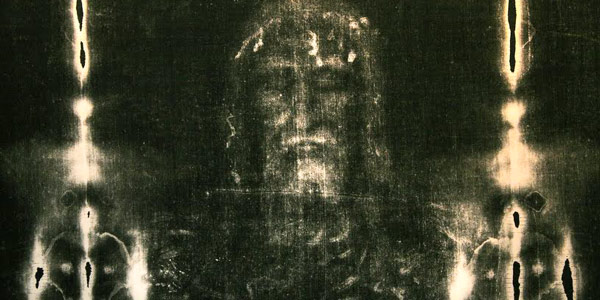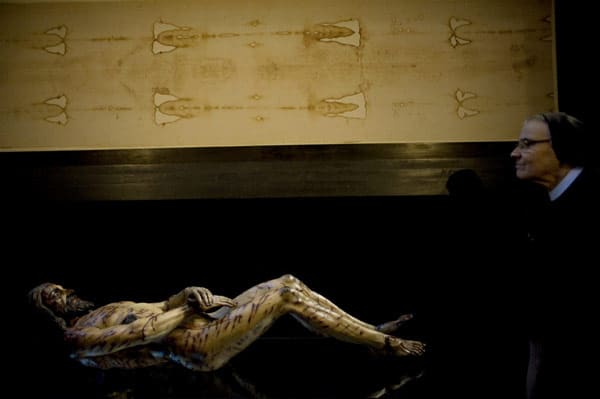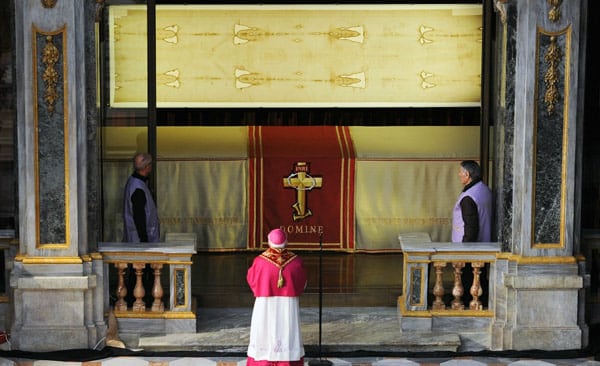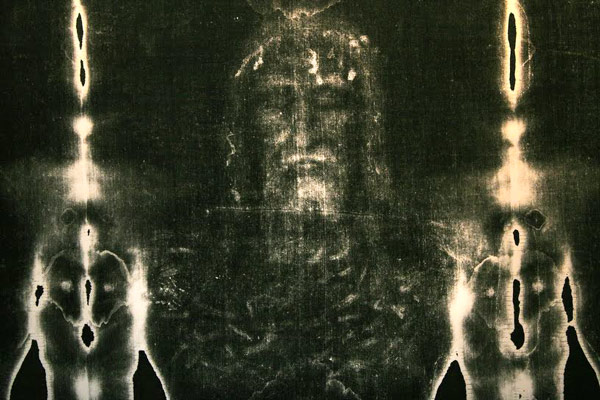One of the invaluable relics in Christianity is rightfully considered the Shroud of Turin (Italian: Sindone di Torino). For many millions of people, this is the authentic cloth used for the burial of Jesus Christ, upon which the mysterious image of the wounded Body of Jesus, bearing traces of blood, is imprinted. According to the beliefs of Christian believers, the linen shroud from Turin bears witness to the sufferings of Jesus Christ, evoking awe and reverence in the presence of this shroud.
The shroud is named the Shroud of Turin because it has been located in Turin, Italy, for over 400 years, and it is preserved in the Church of St. John the Baptist. This well-preserved relic takes the form of a rectangular cloth measuring 14.3 feet by 3.6 feet (4.36 m by 1.1 m). The Shroud of Turin is woven from linen originating from the regions of the Near East.
Officially owned by the Catholic Church as an invaluable cloth, it came into possession after the death of Humbert II of Savoy in 1983. He bequeathed it to the Vatican, where it remains to this day. The Roman pontiffs, led by the Pope, affirm their belief in the authenticity of the relic, asserting that the image imprinted on the cloth is indeed that of Jesus.
Page Contents
Research
Few relics have undergone such meticulous examination as the Shroud of Turin. Ongoing scientific debates revolve around the cloth fragment that, according to tradition, enveloped the body of Jesus of Nazareth after his crucifixion.
The imprint of the body engenders genuine interest from the most astute minds of humanity. If this is indeed the authentic burial shroud of Jesus, then the enigmatically imprinted visage of the divine-human Being speaks of the Resurrection of Jesus with profound significance. Skeptics and atheists are compelled to challenge the compelling evidence of the relic’s authenticity.
World-renowned scholars from across the globe have rigorously studied the ancient fabric fragment, pooling their efforts to solve this significant historical puzzle. The Shroud of Turin has undergone multiple meticulous analyses by historians, photographers, geneticists, mathematicians, chemists, archaeologists, artists, microbiologists, biophysicists, pathologists, and surgeons.
Increasing evidence contradicts the skeptics’ hypothesis that this creation is the work of Renaissance-era artists. Researchers have discovered that the shroud contains:
- Limestone particles characteristic of the Dead Sea region.
- Pollen and microorganisms native to Jerusalem.
- Aragonite within the bloodstains.
- Coins over the eyes.
- Male blood, verified chemically.
Read about the coins of ancient Rome.
Image on the Fabric
The imprint clearly displays the outline of a tall male figure with numerous wounds. Even the smallest drops of blood and scratches are visible. If the Shroud of Turin is a forgery, then its author must have been intimately familiar with the Scriptures, as the sufferings of Jesus are depicted with remarkable precision.
Between the fifth and sixth ribs on the right side, a distinct wound from a spear is visible, along with the jagged nail wounds on the wrists and feet, multiple scourge marks, and the back appears as a mass of injuries – the Roman whip had metal pieces attached to its ends, made from ox sinews. Thorns from the crown are also evident, along with numerous signs of beatings and mistreatment; an impression from the crossbeam is visible on the shoulder, reminiscent of Jesus.
Crucified, Jesus would have experienced rapid, labored breathing due to slow, brutal asphyxiation. When combined with the searing Palestinian sun and unquenchable thirst, the Turin cloth bears indelible traces of inhuman outrages suffered by the divine-human. Jesus was subjected to the brutality of a whole cohort of soldiers.
One side of the shroud bears two imprints of human bodies in a posture typical of 1st-century burial customs. These imprints resemble burn marks, similar to those left by a hot iron. Witnesses attest that the shroud’s image is best viewed from a distance of 6.6 feet (2 meters) or more. The closer one approaches the cloth, the more challenging it becomes to discern the mysterious image, as it starts to blur.
This ancient shroud has preserved the traces of events that occurred in 1532 when it suffered damage from a fire. The folds of the cloth were scorched by molten silver. Although the cloth itself was partially damaged, the fire scarcely touched the divine image.
Traces of Execution
Throughout the image, bloodstains are noticeable, especially heavy bleeding is observed in the area of the feet and wrists. The wound on the right side precisely aligns with the narrative of the blasphemous indignities inflicted upon Jesus during his execution. According to Roman customs, nails were driven into Jesus Christ’s wrists, after which a soldier thrust a spear between the 5th and 6th ribs to ensure his death.
In the execution by crucifixion, Romans employed nails only in the early centuries A.D. Additionally, the image displays traces of bloody streaks on the face and head, consistent with the biblical account of scourging and torment from the crown of thorns that preceded Jesus’ crucifixion. No signs of decay were found on the linen cloth.
In four places on the cloth, there are groups of three holes arranged in the shape of the letter “T,” burnt by a heated object. It is presumed that the holes were caused by burning fragments of frankincense placed on the folded cloth.
Under close examination using magnification, specialists noted a remarkable aspect of the faded piece of cloth. The image was rendered without any pigments or coloring agents, devoid of brushstrokes, and bore no resemblance to the works of any artists, lacking distinctive features of a specific artistic style. Equally astounding was the fact that the imprinted image affected only the top layer of fibers, despite all coloring substances that would inevitably penetrate the fabric.
Modern Science about Shroud of Turin
Photographic Negative
Another unique discovery emerged in 1898 when photographer Secondo Pia was permitted to take two photographs of the relic. Secondo was astonished to find that the outlines of the silhouette appeared on the negatives, and the resulting image was positive. The Turin cloth with its miraculous image turned out to be a photographic negative. When photographed, a positive image is obtained. Secondo was deeply moved by this revelation, as the black-and-white medium significantly enhanced the contrast.
The image’s peculiarity was further compounded by the absence of any contours. Artists historically relied on contours to give shape to their portraits, a practice extending until the Impressionism of the 19th century. Conclusive research often hinges on drawing style and the nature of contours. It seems unlikely that artists from the Renaissance era could capture such a superb negative impression on cloth without any knowledge of photography.
New Discoveries
In 1931, one of the finest professional photographers, Giuseppe Henri, was commissioned to capture a series of photographs of the relic. This endeavor unveiled new discoveries and other details, such as the possibility of Roman coins covering the eyes of the figure lying within the shroud.
Specialists employed the following methods while working with this miraculous fabric:
- X-ray analysis;
- Infrared radiation;
- Thermography;
- Radiocarbon dating;
- Plasma mass spectrometry;
- Ultraviolet rays;
- Macro photography;
- Electron microscopy;
- DNA analysis;
- Modern advancements in microbiology and chemistry;
- Scientific modeling;
- Computer technologies.
Preservation of the Fabric
The Turin shroud is meticulously and carefully preserved, shielded from microbial intrusion. Its excellent preservation is attributed to the arid climate and the absence of air. For centuries, the relic remained enclosed within chests, avoiding exposure to daylight. For about 500 years, the Turin shroud was securely sealed within a stone wall.
The Turin cloth remains in exceptional condition, which is not surprising considering that numerous shrouds have survived to the present day, despite being three to four times older than the Turin shroud. Researchers are familiar with a multitude of burial cloths dating back to 1,000 years B.C. and beyond, yet none of them bear any imprints.
Radiocarbon Method
A specialized Turin Commission of renowned scientists was formed to study the relic, and they determined that the shroud is completely unaffected by atmospheric conditions. These experts decided to conduct new experiments on threads and small fabric fragments, documenting the process on video.
Dr. Raes pointed out that a master of the highest caliber worked on the yarn, and the fabric’s density corresponds to high-quality Egyptian textiles. During that time, this piece of fabric was exceptionally valuable. The Holy Scriptures mention Joseph of Arimathea, who wrapped Jesus’ body in the shroud, as a wealthy citizen.
The radiocarbon method revealed the presence of ancient cotton fibers of Egyptian origin, proving that the fabric was woven on the same loom as the previously known cotton. Europeans were unaware of this type of cotton until the 9th century, and the English were not familiar with a similar material until the 15th century, making the possibility of forgery highly unlikely.
In 1978, the Turin Shroud underwent meticulous examinations by 40 specialists using state-of-the-art equipment. The group of scientists managed to ascertain that the image on the fabric appeared as a result of a phenomenal event as if the body had passed through the fabric, leaving behind burn marks resembling fire traces that only affected the upper layers of the fabric. This could potentially confirm the Resurrection of Jesus Christ.
In 1988, research on the age of the material hit a dead end when the world’s experts concluded that the shroud could not be older than 700 years. Although meticulous calculations were made, the experts failed to account for the effects of fires that had affected the fabric. In 1995, scientists Andrey Ivanov and Dmitry Kuznetsov identified errors in the analysis of radioactive carbon, scientifically proving that fire, smoke, and soot increased the atomic content, leading to a reduction in the age of the well-known cloth. As a result of these scientific experiments, it was established that the shroud’s age is approximately 2,000 years.
The imprint found on the shroud is impossible to replicate using any known action to date. It can remotely be likened to the outlines of bodies left after the atomic explosion in Hiroshima. To this day, no one has been able to provide an explanation for this phenomenon.
For believers in the Resurrection of Jesus Christ, the Turin Shroud is a miracle left for future generations to ponder.
Book about the Shroud of Turin
The book “Leonardo da Vinci and the Priory of Sion: Revelations of the Templars” has been published. Its authors, Clive Prince and Lynn Picknett, have come to the conclusion that the enigmatic Turin Shroud was directly connected to the genius Leonardo da Vinci. The book unravels numerous mysteries that might be concealed within the sacred cloth.
I also recommend downloading the following books:
Film about the Shroud of Turin
“The Turin Shroud” is a documentary film that focuses on new discoveries, with the primary intent of establishing the authenticity and age of the shroud. The film’s creators meticulously explore scientific hypotheses that shed light on the relic’s origin. It showcases highly detailed footage of scientists at work. Both the documentary film and the book compellingly present various scientific perspectives.
 Italy for me From Italy with love
Italy for me From Italy with love





